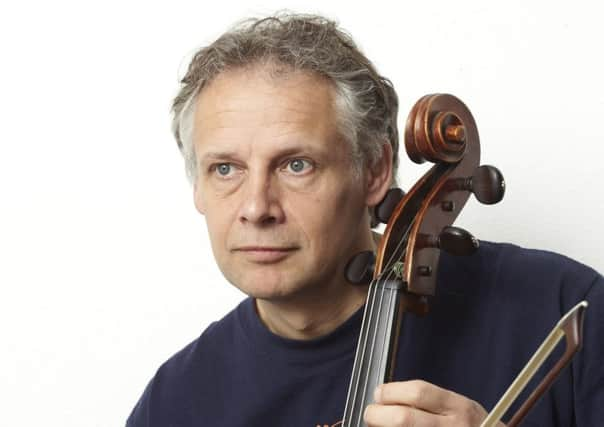Classical review: Doric String Quartet | Pieter Wispelwey


Music at Paxton | Paxton House, Berwickshire
Doric String Quartet/Alina Ibragimova/ Cédric Tiberghien | Rating ***** Pieter Wispelwey | Rating ****
The exceptional duo set sparks flying on Saturday evening when they teamed up with the Doric String Quartet for the rarely played Concert for Violin, Piano and String Quartet in D by Ernest Chausson. This is the sort of musical gold festivals can flaunt by giving musicians the opportunity to explore their wish list of repertoire that often involves unconventional forces.
Advertisement
Hide AdAdvertisement
Hide AdChausson’s lush, rhapsodic soundworld is not unlike that of Dohnanyi’s Sextet and there was much to savour in this thrilling account: Tiberghien’s tumbling waterfalls of notes, Ibragimova’s rich, velvety tone soaring over the quartet and her exchange of long sweeping phrases with the viola. Such was the intensity of the Wagnerian-like cliff-hanger climax the Doric Quartet maintained right to the final notes, the stirring experience appeared to raise the eyebrows of Henry Raeburn, one of the portraits in the new additions to the recently hung picture gallery at Paxton.
This brilliantly conceived programme was completed by a unlikely, but perfect pairing, of quartets. Thomas Adès’ The Four Quarters charts the course of a day, in this case a 25 hour one. The magic of this invisible hour pervaded this stunningly poetic score with star-bright harmonics, frenzied pizzicato and beguiling slightly off-centre rhythms framed within a courtly, renaissance-like style. Creating stained glass windows of sound the Dorics stunningly captured the fragile heartbeat of the universe.
Adès’ rich textures and complex rhythms have much in common with Beethoven’s String Quartet in E minor, Op 59 No 2 ‘Razumovsky’, especially in the second movement, inspired by Beethoven’s contemplation of the night sky and the music of the spheres. Once again the Doric Quartet’s finely judged no-holds-barred interpretation was compelling as they teased out the different voices in the quirky Russian-inspired third movement and fearlessly attacked the biting rhythms of the galloping finale.
Earlier Pieter Wispelwey gave a very individual account of three of Bach’s suites for unaccompanied cello, Nos 1, 2 and 6, in the intimacy of Paxton’s dining room. It’s good to see the festival exploring other spaces in this Palladian house and the lively acoustics beautifully conveyed Wispelwey’s tonal warmth and clear articulation. His technique is superb and this really came to the fore with his smooth-as-silk double stopping in the sixth suite, originally written for a five-stringed instrument. It might be one of the most challenging suites, but it was Wispelwey’s most engaging and dramatic performance, with suites 1 in G and 2 in D minor proving to be more uneven and erratic.
While there was fluidity in the faster movements, the preludes, courantes and gigues, it was hard to find a pulse in the slower allemandes and sarabandes. These suffered from rather too much rubato, with the pushing and pulling of the time creating instability and imprecision in what are essentially dance movements.